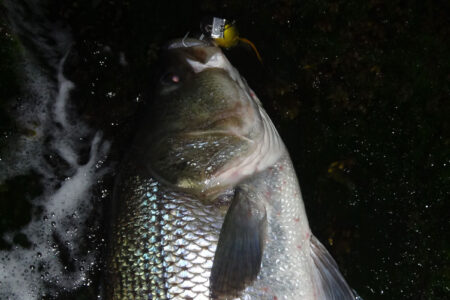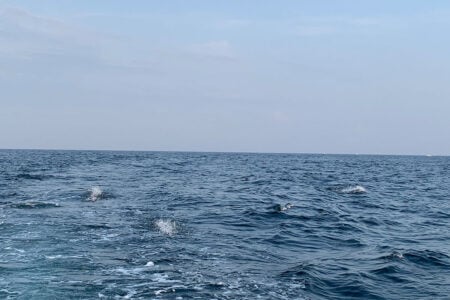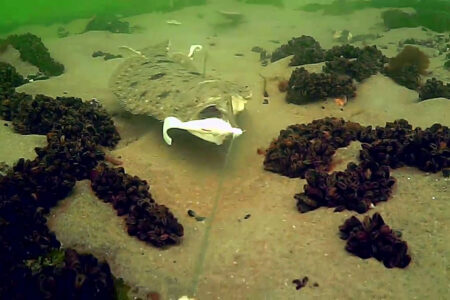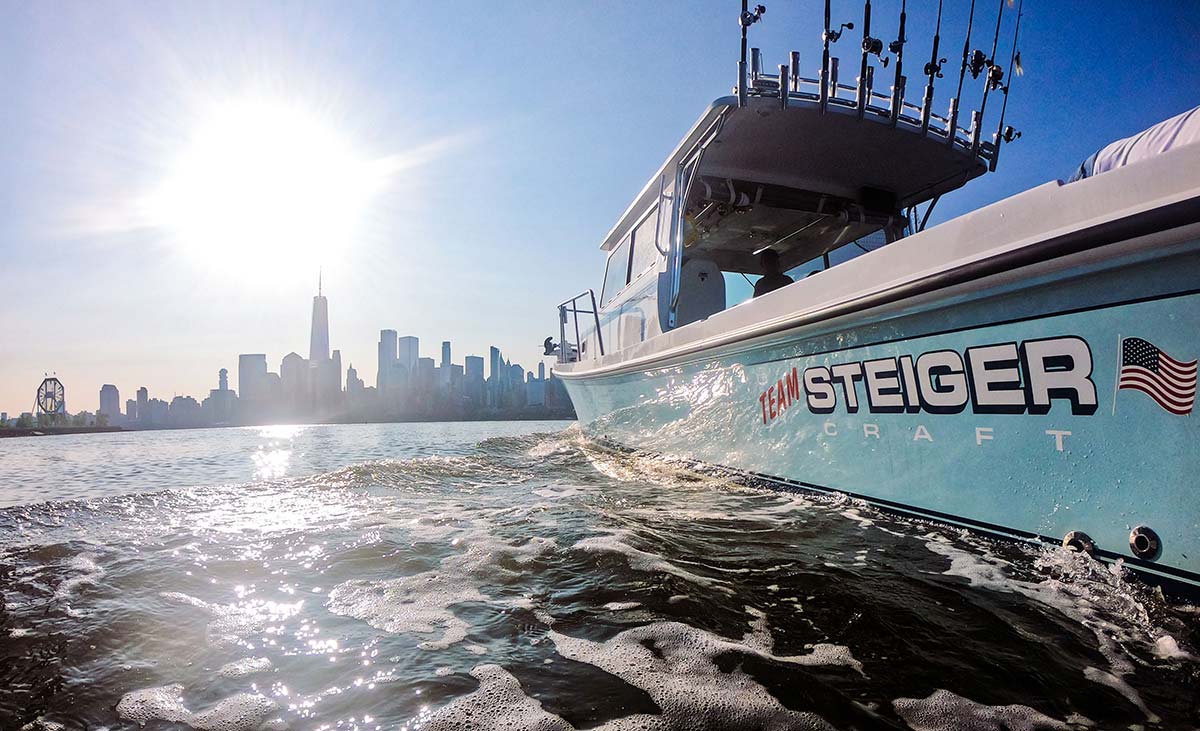
On your next trip into Manhattan, perhaps consider bringing along some tackle!
When most folks think of New York City, what often first comes to mind are visions of bright lights, concrete and steel canyons, subways, and a seemingly overwhelming mass of humanity. Rarely do those outside of a small angling circle associate the City’s five boroughs with what can be considered quality sport fishing. Yet, Manhattan, Brooklyn, the Bronx, Queens, and Staten Island all offer significant opportunities to fish both saltwater and freshwater.
During my youth growing up in the Bronx and subsequently living in Queens before moving to the “country,” there were always enough local fishing opportunities to make the efforts worthwhile. I cut my angling teeth fishing these city waters. Although that was many full moons ago, the urban fishing scene, in some respects, has actually gotten better with more angler access, greater diversity of available species, and restorative efforts for highly sought-after species like largemouth bass.
Fishing the five boroughs of New York City provides many opportunities to catch mixed saltwater species such from blues to weakies and everything in between. On the freshwater scene, largemouth bass are readily available in ponds and lakes scattered about the boroughs, as are bluegill, black crappie, pumpkinseed, brown bullhead, yellow perch, common carp, green sunfish, white perch, and pickerel.
Before industrialization, wild trout and sea-run “salter” trout populated the rivers, creeks, and streams of New York City and the outlying areas. During the days before the advent of hatcheries, native brook trout were quite abundant. They also represented fish whose flesh was highly coveted by patrons of some of the finest emerging New York City restaurants. When combining that level of demand with the negative effects of an exploding population and pollution from expanding industrial development, an inevitable death blow would eventually be dealt to native brook trout. As time passed, the trout disappeared from those native city waters. But contemporary times have indeed changed the fishing landscape. Environmental and conservation awareness have helped to clean up and revitalize most of the region’s fresh and salt waters, and the waters of New York City are no exception.
While trout are still scarce within the city limits, New York City has become somewhat of a hotbed of activity for overall recreational fishing. Nowhere is that more evident than within the realm of saltwater fishing. From Manhattan and the Bronx to Brooklyn, Queens, and Staten Island, there are numerous locations where one can find access to fish for stripers and enjoy some outstanding action. It has become commonplace for many urban anglers to catch trophy striped bass in the shadow of the Statue of Liberty and other hotspots along the East River and in the New York Bight.
Staten Island, in its own right, has become a quality urban fishing destination, especially those areas that are part of the Gateway National Recreation Area, a piece of angling real estate that is shared with the boroughs of Brooklyn and Queens. Great Kills and portions of Raritan Bay are also accessible to Staten Island bass locations.
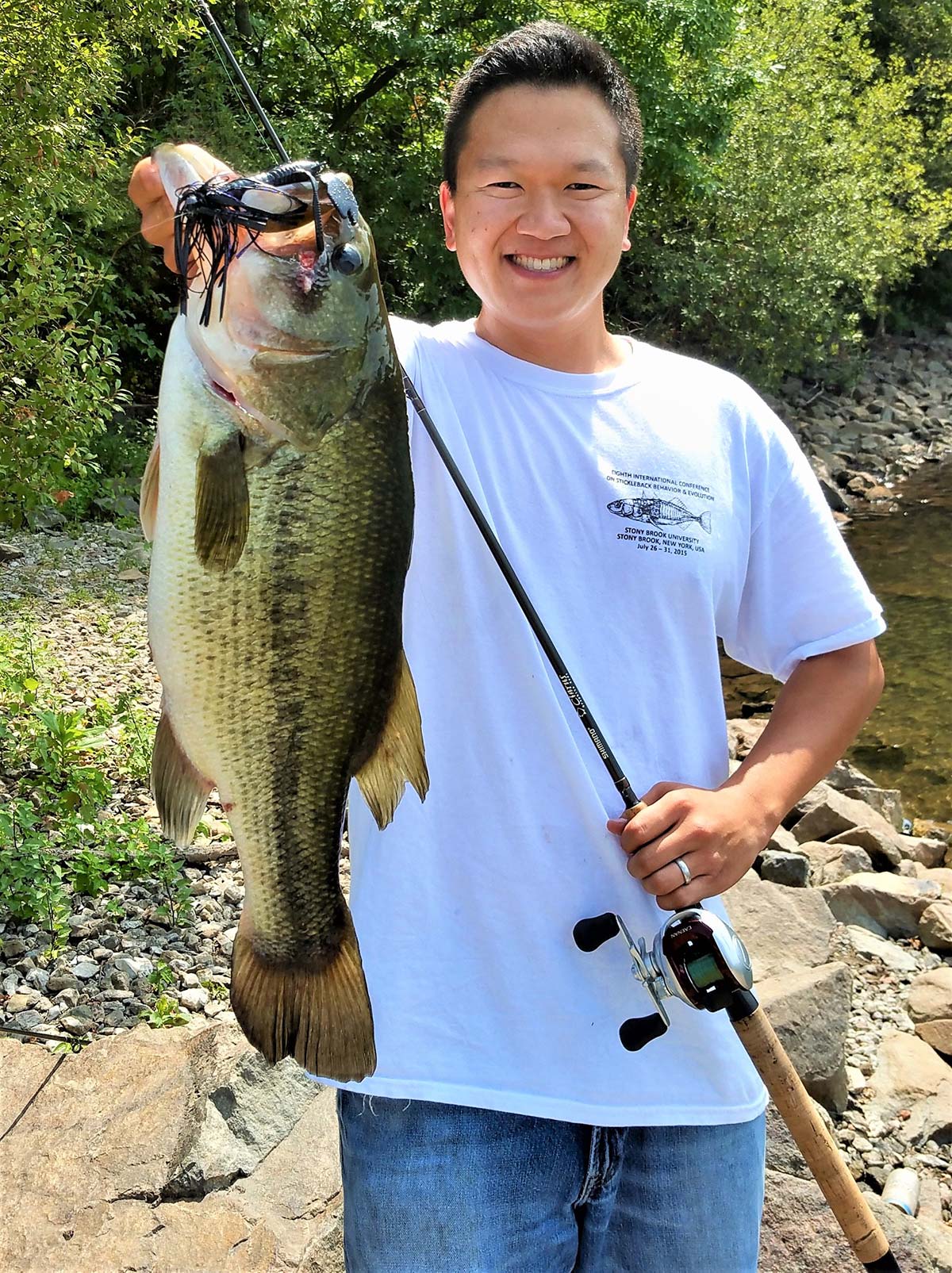
Brooklyn
Anglers who choose to wet a line in Brooklyn have access to the 9,155-acre Jamaica Bay Wildlife Refuge, which is part of an even larger 26,000-acre Gateway National Recreational Area. This massive park encompasses three of the NYC boroughs, including Brooklyn. While this refuge and park are the region’s most popular fishing attractions, Brooklyn is also home to a number of other excellent angling destinations. Some of the more notable locations are Rockaway Inlet, Sheepshead Bay, Manhattan Beach, locations around the Marine Parkway Bridge, Upper and Lower New York Bays, and Coney Island Beach.
The areas in and around Brooklyn are typically some of the region’s first to become active in the spring with the emergence of grass shrimp and the arrival of masses of sand eels and menhaden. Striped bass are the first to show in force, and ever-expanding populations of weakfish are other early residents. Bluefish and fluke follow as the season progresses. As late summer turns to fall, both Atlantic bonito and false albacore might make sustained visitations. Bottom fish are also abundant. Many of the fish species that frequent the waters of Brooklyn remain in the area throughout much of the season, with a secondary big push of fish again toward the middle to the end of the fall.
The opportunity to fish the various and productive locations of Brooklyn is made possible through City, state, and federal access, with the southern and western portions of the borough offering the most hotspots.
Queens
The Borough of Queens also offers varied fishing opportunities. The Rockaways section is well-positioned to take full advantage of Jamaica Bay and the Gateway National Recreational Area. A significant portion of that park is located in Queens, and the more northerly reaches of the borough offer access to the Long Island Sound, Flushing Bay, Little Neck Bay, and the upper reaches of the East River. Collectively, these waters tend to heat up early in the season and hold fish throughout the year. Queens also hosts a number of city, state, and federal facilities that provide access to productive boat and wade fishing.
Beginning with the waters of Jamaica Bay, there are a number of beach, bay, and marsh areas to explore via wading, boat, or kayak. Some of the more noteworthy areas within the bay are Pumpkin Patch Channel, Broad Channel, Horse Channel, Black Wall Channel, Grassy Hassock Channel, and Head of the Bay. There are also a plethora of nooks, crannies, basins, tidal ponds, and creeks in this area that can be explored throughout the seasons. The northern sections of Queens allow for access to some diverse fishing.
Following an almost semicircular route at the northernmost tip of the borough, an angler can begin at the old World’s Fair Marina and work around to the lower parts of the Long Island Sound and Little Neck Bay, an area that can be very productive for striped bass during the early weeks of the season. Little Neck Bay is bordered by Queens on one side and a small slice of Nassau County on the other. The bay is a perennial favorite of striped bass anglers, and each year it relinquishes its share of numerous school-size bass as well as larger stripers. Once the waters of the bay warm to summer levels, the fishing slows. The lower parts of the Long Island Sound off Queens also offer excellent early-season fishing. Fish will often remain in this area through most of the season. This fishery typically includes bass, bluefish, some weakfish, fluke, scup, black sea bass, and the occasional bonito or false albacore during late summer and early fall.
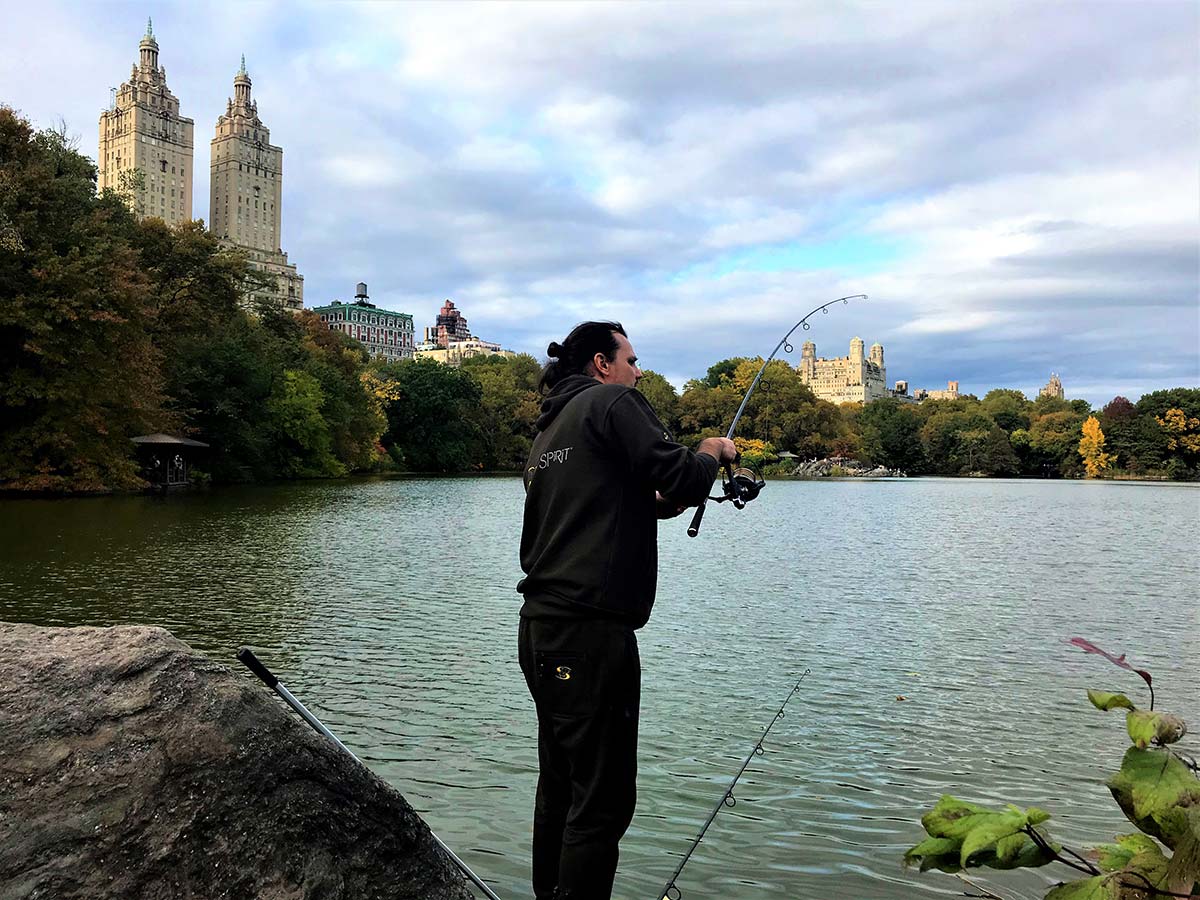
The Bronx
The waters that surround the Bronx are perpetual early-season hotspots and host a variety of fish species throughout the entire season. The extreme western reaches of the Long Island Sound give life to a vibrant fishery in the borough of the Bronx, especially the areas in proximity to the Throgs Neck Bridge. These waters offer excellent early-season opportunities for striped bass as the fish migrate out from the Hudson River into the East River and into the Sound. This is one of the regions that annually report some of the first bass of the New York season. Post-spawn river bass are typically hungry creatures and feed voraciously.
The peninsula of Throgs Neck offers some fine angling, as do surrounding beaches, bay shorelines, and jetties. Pelham Bay Park embraces 13 miles of shoreline which face the open Long Island Sound and represents solid opportunities for surf anglers. In addition, the park is home to Orchard Beach. The Orchard Beach Lagoon is a very popular and productive location for fishermen. A launch area for kayaks and canoes gives anglers a greater degree of flexibility when fishing the lagoon. The boulder-laden areas around the Stepping Stones Lighthouse and Execution Light support a variety of bait and sportfish. Striped bass especially like the structure that exists around lighthouses. So do blackfish, porgy, and sea bass. The variation of very deep and very shallow water in proximity to the lighthouse can make for heavy currents during certain tidal and moon phases. City Island is a unique enclave situated south of Pelham Bay and east of Eastchester Bay.
As a young boy, City Island’s relative remoteness from the rest of the Bronx always drew me to its waters. The nature of the appeal was that this “Island” was one of the few places I could get to via bicycle and consistently catch striped bass. While that was indeed many seasons past, the area is still a magnet for bass as well as many other species of sport fish. Two of the best early-season locations in the area are Turtle Cove and the waters around Hart Island. The area known as City Island Harbor is also another local fishing hole. Eastchester Bay is a protected salt marsh located between the Bronx mainland and City Island. Water from the Hutchinson River to the north empties into the bay while the lower end of the bay meets and mixes with water from the Long Island Sound, Little Neck Bay, and the East River.
The principal species found in the bay include striped bass and bluefish during the spring and early summer. Winter flounder and summer fluke can also be caught from these waters. Populations of winter flounder were once quite vibrant in the waters around the Bronx. As a youngster, limits of these tasty flatfish were the norm rather than the exception. Their stocks have diminished significantly since then, but recent years have brought about slowly rebuilding populations of this flatfish. Although very far from their peak levels, reasonable catches can still be made, and the western Sound around areas of the Bronx experienced one of the strongest recent revivals. The Bronx is also home to a fleet of excellent party boats, the most prominent being the Island Current Fleet that sails from City Island, from docks located at the site of the legendary Jack’s Bait and Tackle shop. Jack’s is an excellent source of local fishing information.
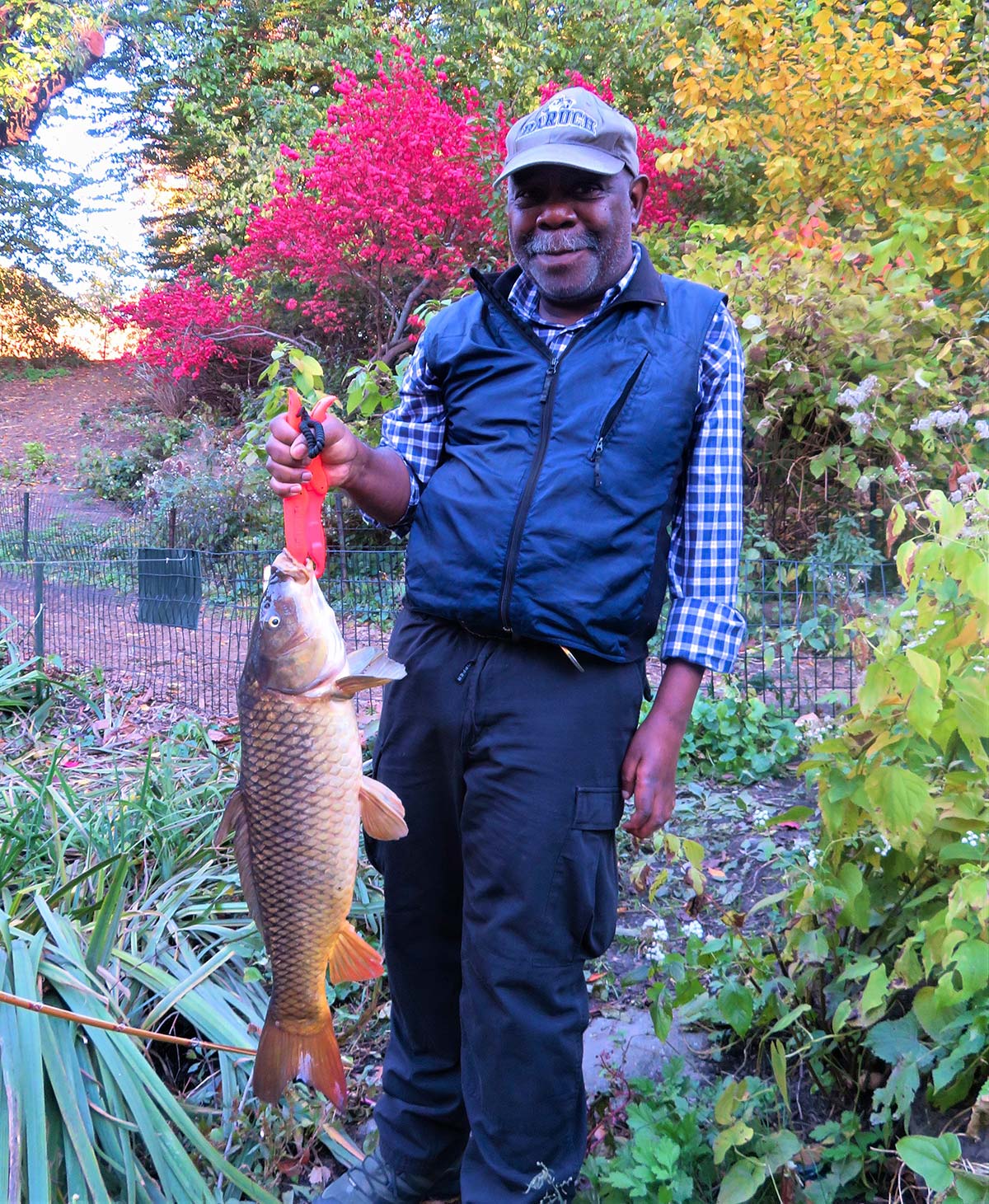
Sweetwater Success
Beyond the saltwater fishing, there are many lakes and ponds scattered about the five boroughs that provide access to freshwater angling, including Wolfes Pond (Staten Island); Martling Lake (Staten Island); Silver Lake (Staten Island); Prospect Lake (Brooklyn); Kissena Lake (Queens); Oakland Lake (Queens); Baisley Park Pond (Queens); Central Park Lake(Manhattan); Harlem Meer (Manhattan); Clove Lake (Staten Island); Golden Pond (Queens); Indian Lake (Bronx); Van Cortland Lake (Bronx); and Willow Brook Lake (Staten Island).
While some fine largemouth bass fishing can be found in many of these waters, other warm-water species are also quite plentiful. Bluegills, perch, and strong populations of common carp also reside in city waters. Access occurs through facilities of New York City, and some have special fishing regulations. The watersheds that comprise the New York City reservoir system also provide outstanding freshwater fishing opportunities. Although located outside the city limits, the reservoir network collectively represents some of the most diverse and best fishing in New York State. A total of 21 reservoirs offer access to a wide range of fish species, including largemouth bass, smallmouth bass, rainbow trout, brown trout, lake trout, panfish, carp, walleye, and chain pickerel.
Anglers must obtain access permits and abide by special regulations to fish in these waters. For further information, check the New York State Department of Environmental Conservation’s website (www.dec.ny.gov) or the New York City Department of Parks website (www.nycgovparks.org).
There’s an abundance of fishing to be had in the Big Apple and its boroughs. If you find yourself enjoying the city life, be sure to sample some of its fine outdoor life.
